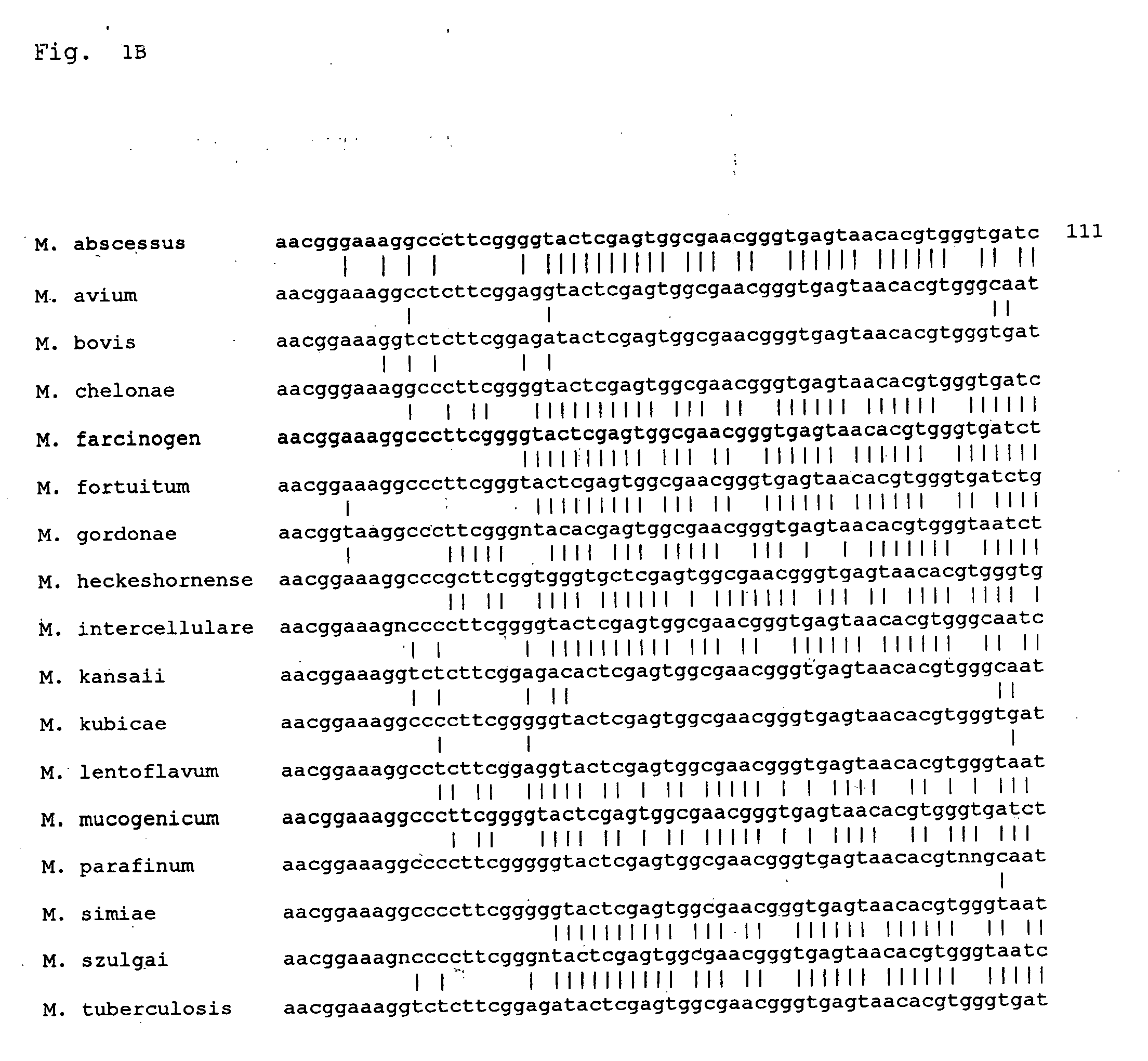Method of determining a bacterium species
a bacterium and species technology, applied in the field of determining a species of a bacterium, can solve the problems of difficult diagnosis of infections by acid-fast organisms, damage to host tissues, major health problems worldwide, etc., and achieve the effect of simple use and rapid and accurate method of diagnosis
- Summary
- Abstract
- Description
- Claims
- Application Information
AI Technical Summary
Benefits of technology
Problems solved by technology
Method used
Image
Examples
example
Design of Primers
[0053] Deoxyribonucleotide sequences of 16S ribosomal RNA are aligned to determine a position, a segment, positions or segments of nucleotide matches and mismatches among species belonging to acid-fast bacteria. Genus-specific oligonucleotide primers are designed from regions of DNA segment containing DNA identity among all species compared. In this example, the genus-specific primers used in the experiment are forward primer 5′-GCGTGCTTAACACATGCAAGTC-3′ and reverse primer 5′-TCCTCCTGATATCTGCGCATTC-3′. These primers are designed to amplify a region containing hypervariable regions A and B (Rogall, et al., 1990; Holberg-Peterson, 1999; Tortoli, et al., 2001). The size of the pre-determined fragment is estimated to be from 550 through 665 base pairs, depending on the species. The universal primers used in this example are: 5′-TGCCAGCAGCCGCGGTAATAC-3′ and 5′-CGCTCGTTGCGGGACTTAACC-3′. The estimated fragment length is between 500 through 700, depending on the organism....
PUM
| Property | Measurement | Unit |
|---|---|---|
| temperature | aaaaa | aaaaa |
| temperature | aaaaa | aaaaa |
| turnaround time | aaaaa | aaaaa |
Abstract
Description
Claims
Application Information
 Login to View More
Login to View More - R&D
- Intellectual Property
- Life Sciences
- Materials
- Tech Scout
- Unparalleled Data Quality
- Higher Quality Content
- 60% Fewer Hallucinations
Browse by: Latest US Patents, China's latest patents, Technical Efficacy Thesaurus, Application Domain, Technology Topic, Popular Technical Reports.
© 2025 PatSnap. All rights reserved.Legal|Privacy policy|Modern Slavery Act Transparency Statement|Sitemap|About US| Contact US: help@patsnap.com



